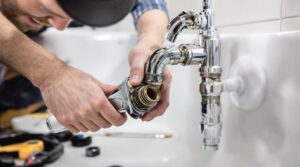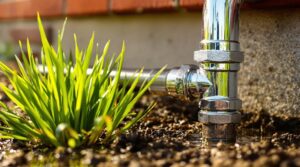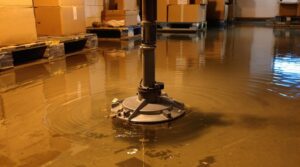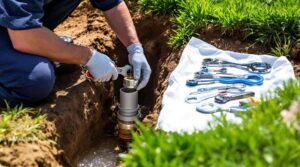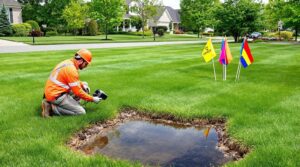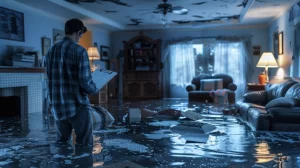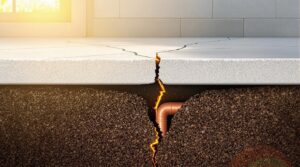When a burst water pipe occurs outside the house, it is essential to act quickly to minimize damage and costly repairs. Locate the source of the leak by checking for visible signs of damage, listening for hissing sounds, and looking for wet patches. Immediately shut off the main water supply valve, usually found near the house's foundation or water meter. Further steps, including repair and cleanup, can be executed effectively by understanding the severity of the damage and the necessary actions to take.
Key Takeaways
- Look for visible signs of damage, such as cracks or holes in outdoor pipes, to locate the source of the burst pipe.
- Turn the main water shut-off valve clockwise to close it and halt water supply throughout the house to minimize damage.
- Evaluate the severity of the damage to determine repair needs and decide whether to DIY or call a professional plumber.
- Gather necessary tools and materials based on the type of pipe and assess the best course of action for repair and cleanup.
- Slowly turn on the main water supply valve after repairs and inspect the area for any signs of leaks to ensure the fix is successful.
Locating the Source of the Burst Pipe
When investigating a suspected burst water pipe outside a house, the first step is to locate the source of the leak. Visible signs of damage, such as cracks or holes in outdoor pipes, should be looked for, particularly in areas prone to freezing temperatures. Individuals can listen for hissing sounds that indicate escaping water from a burst pipe. Checking for wet patches on the ground or surrounding surfaces near the pipes can also signify a leak. In addition to these initial observations, it’s important to inspect the interior of the house for potential burst pipe indicators under your home, such as damp spots on walls or ceilings. Monitoring your water meter for unusual spikes in usage can also help identify hidden leaks that may not be apparent from the outside. Taking these proactive steps can prevent further damage and ensure timely repairs are made.
It is also essential to be aware of a sudden drop in water pressure throughout the house, which can signal a potential burst pipe outside. If the source is not immediately apparent, using professional tools like electronic leak detectors or cameras may be necessary to locate hidden leaks in the water lines. Individuals must remain vigilant when inspecting water lines for signs of a burst pipe to maintain the integrity of the plumbing system.
Shutting Off the Water Supply to Minimize Damage
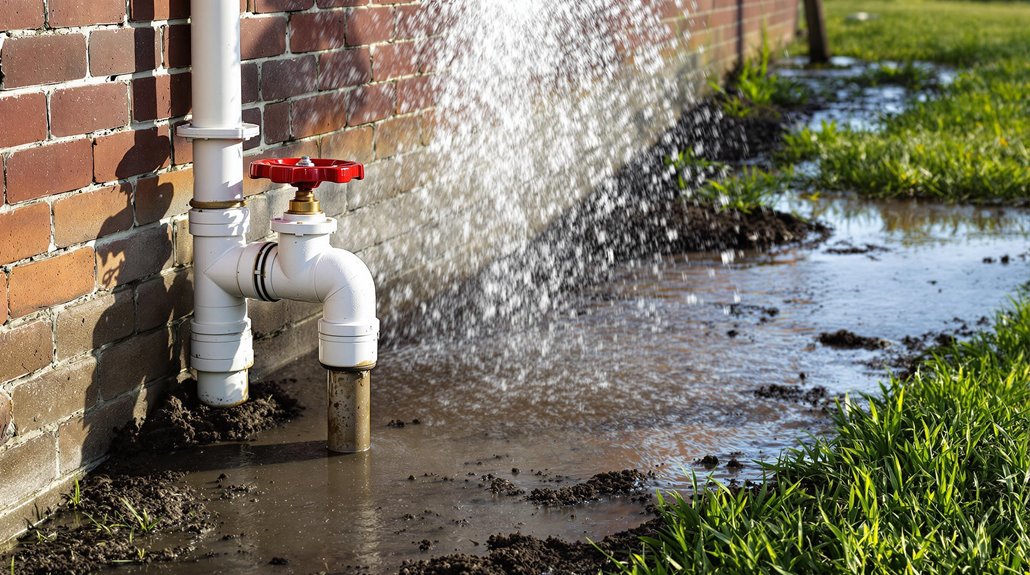
To mitigate damage from a burst water pipe outside a house, shutting off the water supply is essential. This timely action can greatly reduce flooding and potential property damage. Locate the main water shut-off valve, typically found near the house's foundation or water meter, and turn it clockwise to close it, effectively halting water supply throughout the house.
The importance of properly shutting off the water supply cannot be overstated. Key steps to take include:
- Locate the main shut-off valve: Familiarize yourself with its location to quickly stop the flow of water in case of a burst pipe.
- Turn the valve clockwise: Closing the valve will halt water supply throughout the house.
- Regularly check and maintain the valve: Verify it's functioning properly to minimize response time during a burst pipe incident.
- Consult a professional if unsure: If you're unsure where the main shut-off valve is located, ask a professional to help you identify it.
Preparing for the Repair and Cleanup

Evaluating the severity of the damage from a burst water pipe outside a house is vital before commencing on repairs. To guarantee a successful repair, it is imperative to assess the extent of the damage and determine if professional assistance is needed. Make certain to gather the necessary tools and materials depending on the pipe material.
| Pipe Material | Tools and Materials Needed |
|---|---|
| Copper | Pipe cutter, solder, torch |
| PVC | Rubber gaskets, PVC cement |
| Copper (repair) | Compression or push-to-connect fittings |
| General | Shut-off wrench, bucket, dry cloth |
After shutting off the main water supply valve, thoroughly inspect the affected area to identify any signs of water damage. Make certain to take note of any areas that require immediate attention to prevent further damage. A thorough assessment will help determine the best course of action for repair and cleanup.
Repairing the Pipe: DIY or Call a Plumber
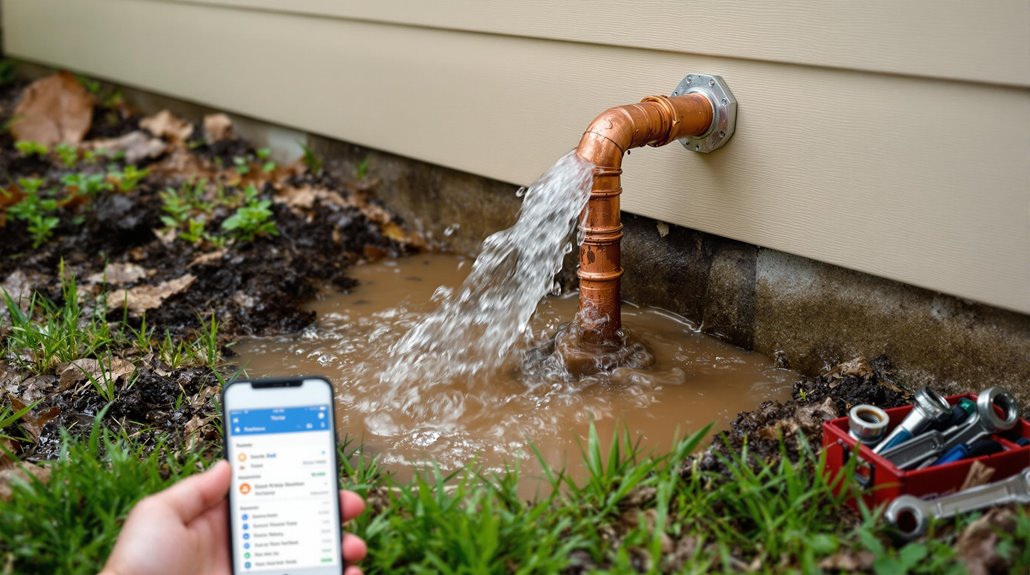
How does one proceed with repairing a burst water pipe outside the house? Evaluating the severity of the damage and one's comfort level with DIY repairs is essential. If the damage is extensive, it may be wise to call a professional plumber.
Consider the Following Factors When Deciding to DIY or Call a Plumber:
- Type of pipe: Copper pipes require a pipe cutter, soldering tools, and potentially compression or push-to-connect fittings, while PVC pipes need rubber gaskets and PVC cement.
- Severity of damage: Extensive damage may be too complex for DIY repairs.
- Comfort level with DIY repairs: If unsure about sealing joints properly, it's best to call a plumber.
- Availability of specialized tools and expertise: Professional plumbers have the necessary tools and expertise to handle complex repairs efficiently, providing peace of mind during emergencies.
Ultimately, repairing the pipe correctly guarantees peace of mind and prevents future leaks and mold growth.
Safely Testing the Repair and Turning On the Water
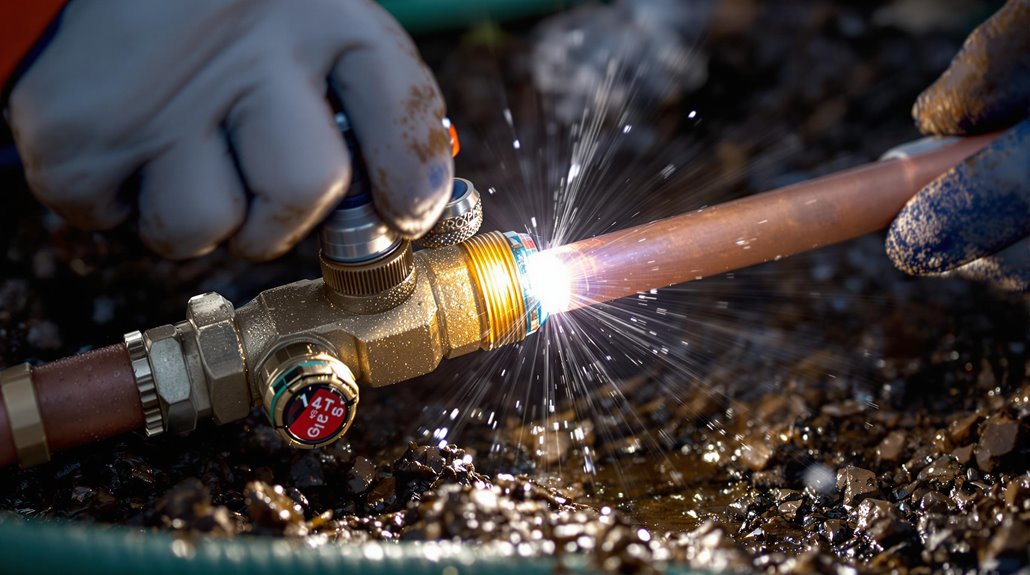
With the repair complete, the focus shifts to safely testing the fix and resuming water supply. To initiate this process, the main water supply valve should be slowly turned on, thereby preventing sudden pressure surges that can cause further damage to the plumbing system.
Immediately after the water supply is reinstated, it is essential to inspect the repaired areas for leaks. Allowing the water to run for a few minutes enables thorough assessment, as any wetness or dampness around the repair site will be readily apparent. Secure seals indicate successful repairs.
To guarantee long-term stability, water pressure should be monitored for any unusual fluctuations, potentially indicating unresolved plumbing system issues. Documentation of this process will provide valuable information for future reference or consultations with professional plumbers if issues persist, contributing to the safe and proper functioning of the plumbing system and providing homeowners a sense of control over their property.

